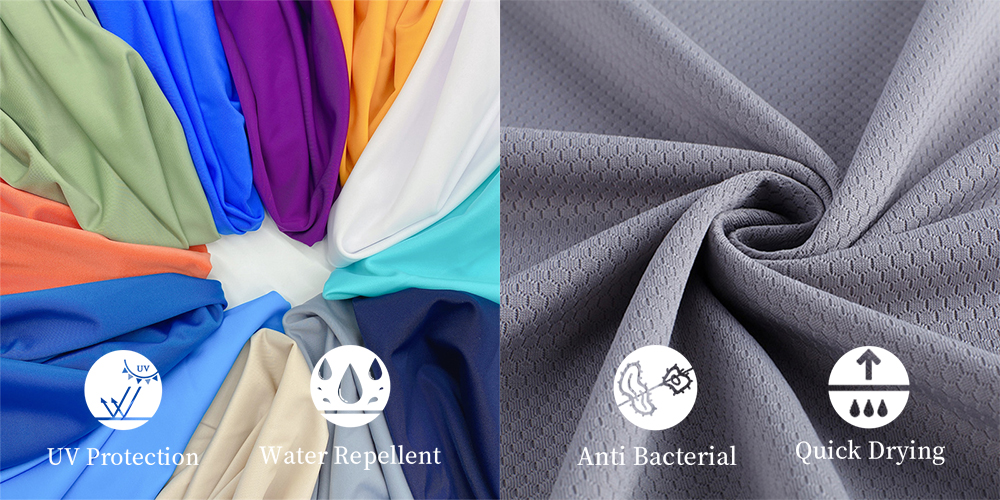Functional fabrics refer to changing the properties of fabrics, adding functional materials, and adding various additives during the production process or finishing, so that the fabric itself has special functions and super performances that ordinary clothing fabrics do not have.
Functional fabrics features
1, Comfortable: high elasticity, memory, heat preservation, windproof, waterproof, anti-wrinkle and non-ironing, moisture wicking, etc.
2, Health: anti-mildew and anti-bacterial, anti-mite, anti-virus, anti-mosquito, negative ion health care, etc.
3, Safe: wear resistance, low temperature resistance, UV protection, flame retardant, antistatic, etc.

Development trend of functional fabrics
With the increasing pressure in people’s life and work, more and more people have begun to devote themselves to leisure and outdoor sports, which directly drives the development of functional fabrics. The application of functional fabrics not only increases the added value of fabric products, but also reflects people’s pursuit of a comfortable and convenient lifestyle and the protection of their own health and safety.
At present, functional fibers such as comfort, recycled, environmental protection, antibacterial, and negative ions are more popular in the market. Antibacterial fibers and eco-friendly fibers are quite interesting in functional fabrics. Among them, antibacterial fibers have been widely used in home textiles, health care clothing, industrial textiles, outdoor sports products and other fields; due to the characteristics of renewable raw materials and no pollution in the production process, eco-friendly fiber products have been favored by many consumers. favor.
What are functional fabrics?
1, UV protection fabric
Most sun protection clothing is a UV protection fabric with sun protection additives added to the fabric, and a layer of sun protection coating is applied to the inner layer of the clothing, just like a sun umbrella. A sun protection suit can block 95% of ultraviolet light.
2, Moisture-wicking fabric
There are three primary ways to give a garment moisture wicking functions: 1, wicking yarn; 2, one-way wicking Knitting Structure; 3, wicking finish.
3, Anti-bacterial fabric
Antimicrobial fabrics are naturally resistant to germs or have been treated to be resistant to germs. Antimicrobial fabrics provide protection against bacteria, mold and other microbes (both harmful and inert).
4, Waterproof fabric
The conventional waterproofing treatments work by covering the pores with a layer of polymer or a membrane. Covering is a general term referring to applying one or more layers of adherent polymeric products on one or both sides of a textile material. The liquid can not pass the fabric because the film of polymeric material is formed on the surface of the textile. That means waterproof materials are generally obtained using surface finishing treatments.
5, Flame retardant fabric
The flame retardant is polymerized, blended, copolymerized, and composite spun to make the fiber have permanent flame retardant properties, mainly including: aramid, flame retardant acrylic, flame retardant viscose, flame retardant polyester, smoldering vinylon, etc. It is widely used in military, firefighting, petroleum, electric power, natural gas, chemical industry, aviation, shipping and other industries. At the same time, it is used to make general clothing, especially children’s clothing, pajamas, carpets, bedding, etc.
Fuzhou Huasheng Textile Co.,Ltd. is a qualified functional fabrics supplier. If you want to know more product knowledge and purchase fabrics, please feel free to contact us.
Post time: Feb-23-2023